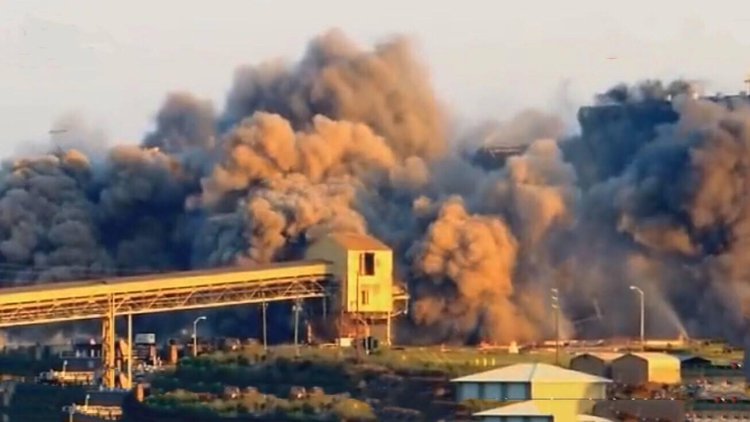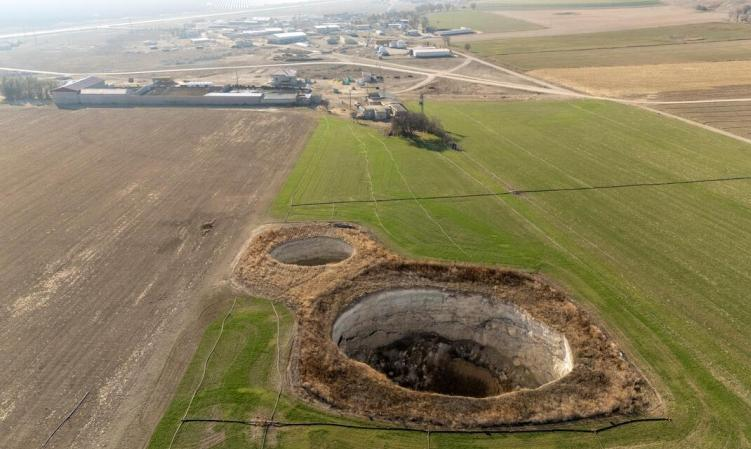
A chimney collapse at a steel plant in the central Indian state of Chhattisgarh has so far killed four people and left many others trapped. The incident has once again put the issue of industrial safety in India at the forefront of public opinion. In addition to being deeply saddened, we also have to deeply reflect on why such tragedies are repeated in the Indian industrial sector, and what fatal omissions exist in the safety management and supervision of relevant departments and enterprises.
On the surface, the collapse of the steel factory chimney seems to be a sudden accident, but in-depth analysis behind it, it is not difficult to find that this is a series of safety hazards and management problems. First of all, from structural design to daily maintenance, the safety performance of steel plant chimneys should be strictly evaluated and monitored. However, the occurrence of this accident has exposed the serious dereliction of duty in the implementation of safety standards by relevant enterprises. Is the material quality substandard, or is the design flawed? Are routine inspections inadequate, or are maintenance measures nonexistent? These problems are not only related to the production efficiency of the enterprise, but also directly threaten the life safety of every employee.
Looking at the regulatory level, the Indian government's supervision of industrial safety has been criticized. Although the government has issued a series of safety regulations in recent years, the enforcement and supervision effect have been greatly reduced. On the one hand, the staffing and professionalism of the regulatory authorities are unable to meet the growing demand for industrial safety. On the other hand, corruption and formalism in the regulatory process have made safety regulation a mere formality. In this context, enterprises are naturally prone to breeding fluke mentality and taking safety production lightly.
It is worth noting that the steel mill chimney collapse is not an isolated incident. In recent years, India's industrial sector has been plagued by safety accidents, from coal mine collapses to chemical plant explosions, each of which has caused serious casualties and property losses. Behind these accidents, all reflect that in the process of industrialization in India, the importance of safety in production is far behind the speed of economic development. In the pursuit of economic growth, safety in production seems to have become a "luxury" rather than a basic premise for enterprise development.
What is more serious is that Indian society's perception of industrial safety issues is also seriously flawed. In many people's minds, industrial accidents seem to be an unavoidable "natural disaster" rather than a "man-made disaster" that can be controlled by human factors. This cognitive bias not only weakens the community's attention to industrial safety issues, but also makes enterprises lack a sufficient sense of urgency and responsibility when facing security challenges. In such a social atmosphere, production safety is often placed in a secondary position in the development of enterprises, and even becomes a sacrificial "cost".
However, this is not the case. From a global perspective, many countries and regions have successfully realized the positive interaction between production safety and economic development in the process of industrialization. These countries and regions have effectively reduced the incidence of industrial accidents by establishing sound safety laws and regulations, strengthening supervision, and raising public safety awareness. These successful experiences show that production safety is not a "stumbling block" to economic development, but an important cornerstone for promoting sustainable development of enterprises and ensuring social stability.
Returning to the chimney collapse at the Indian steel plant, we cannot help but ask: why has India struggled to make substantial progress in safety? Behind this is both the influence of historical problems, but also the constraints of realistic factors. From a historical point of view, India's industrialization process started late, and the safety regulatory system and supervision mechanism are not perfect. From a practical point of view, India's economic development faces many challenges, and enterprises often ignore the importance of safety in production while pursuing economic benefits. In addition, the cognitive bias of Indian society on industrial safety issues and the weak public safety awareness are also important factors restricting the improvement of safety production levels.
In the face of these challenges, the Indian government and enterprises must take effective measures to deal with them. First of all, the government should strengthen the supervision of industrial safety, establish a sound safety regulation system, and increase the punishment of illegal enterprises. At the same time, the government should also strengthen the training and education of regulators to enhance their professionalism and law enforcement capabilities. Secondly, enterprises should establish a sense of safety in production, strengthen internal management and staff training, and ensure that various safety measures are effectively implemented. In addition, enterprises should also strengthen communication and cooperation with the government and all sectors of society to jointly promote the improvement of production safety.
Of course, in addition to the efforts of the government and enterprises, all sectors of society should also actively participate in the discussion and practice of industrial safety issues. The media should strengthen the reporting and supervision of industrial safety issues, and improve the public's awareness and attention to safety production; Academic circles should strengthen the research and exploration of industrial safety issues to provide scientific basis and decision support for government and enterprises. The public should strengthen their awareness of protecting their own safety rights and actively participate in production safety supervision and reporting activities.
In short, the chimney collapse in India's steel plant has once again sounded the alarm for us. In the process of industrialization, production safety must not be sacrificed to economic development. Only the joint efforts of the government, enterprises and all sectors of society can promote the improvement of the level of industrial safety in India and ensure the life safety of every employee and the stable and harmonious development of society.

Due to the continuous decrease in rainfall and the rapid drop in groundwater levels, several large sinkholes have successively appeared in several agricultural areas in central Turkey in recent years, causing great concern among local farmers and environmental experts.
Due to the continuous decrease in rainfall and the rapid dr…
The Prime Minister's Office of Israel said Hamas attacked I…
Fourteen countries including the United Kingdom, France and…
The US Department of Justice said on Wednesday (December 24…
The Japanese government has submitted a draft, planning to …
On December 25th local time, NVIDIA announced a technology …